Poisonous Or Unhealthy Foods You Are Probably Eating
When most individuals think of poison, they probably associate the word with toxic chemicals and skull warning labels. While focusing on the true definition of poison, it's simply a substance with the ability to make an individual ill or cause death when absorbed or consumed. If we look at some of the ingredients in our modern-day food supply, however, we'll notice some common foods can be considered poisonous, as they can make us ill and encourage fatal diseases to develop. Avoid the following commonly consumed foods, as they can be unhealthy or downright poisonous.
Sports Drinks
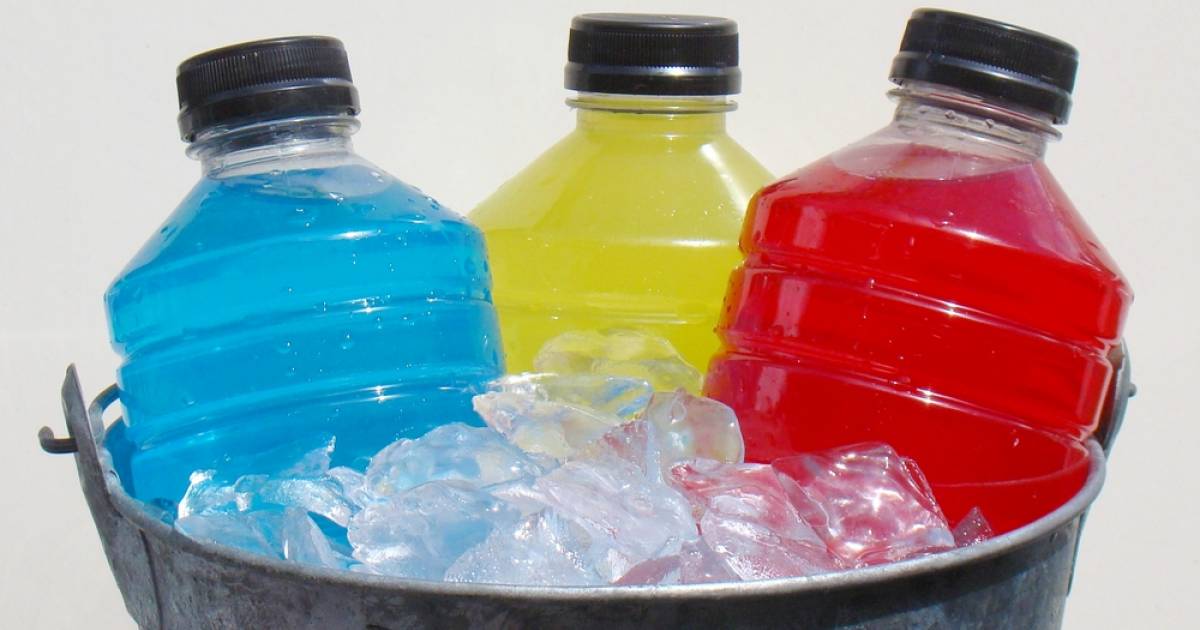
You may think you are refueling your body and topping up on electrolytes after sweating, but sport drinks within America contain some harsh chemicals. All the major name brands use brominated vegetable oil in their citrus-flavored beverages and sports drinks. Vegetable oil doesn't sound too bad, right? Well, brominated vegetable oil was originally patented as a flame retardant. It is known to increase an individual's risk of cancer and autoimmune diseases, as well as a wide range of other problematic symptoms. The worst part is, it's known to bioaccumulate in human tissue. Get into the habit of drinking more water and ditch these toxic products. If electrolytes are necessary, there are healthier options out there.
Learn more about poisonous or unhealthy foods many individuals are eating now.
Bread Containing Brominated Flour

From wraps to bagels, bread crumbs to baked goods, any commercially baked food that contains brominated flour is essentially toxic. Enriched with potassium bromate, this chemical is supposed to increase elasticity in the product. Many bread products are already known to increase issues surrounding obesity and diabetes, however, the addition of potassium bromate makes matters even worse. It has been linked to decreased nervous system function, thyroid complications, cancer, and kidney damage in humans. Some brands do not contain this kind of flour, but for extra security, you may want to invest in a bread maker, so you know exactly what you're consuming.
Keep reading to uncover more unhealthy and even poisonous foods now.
Farmed Salmon
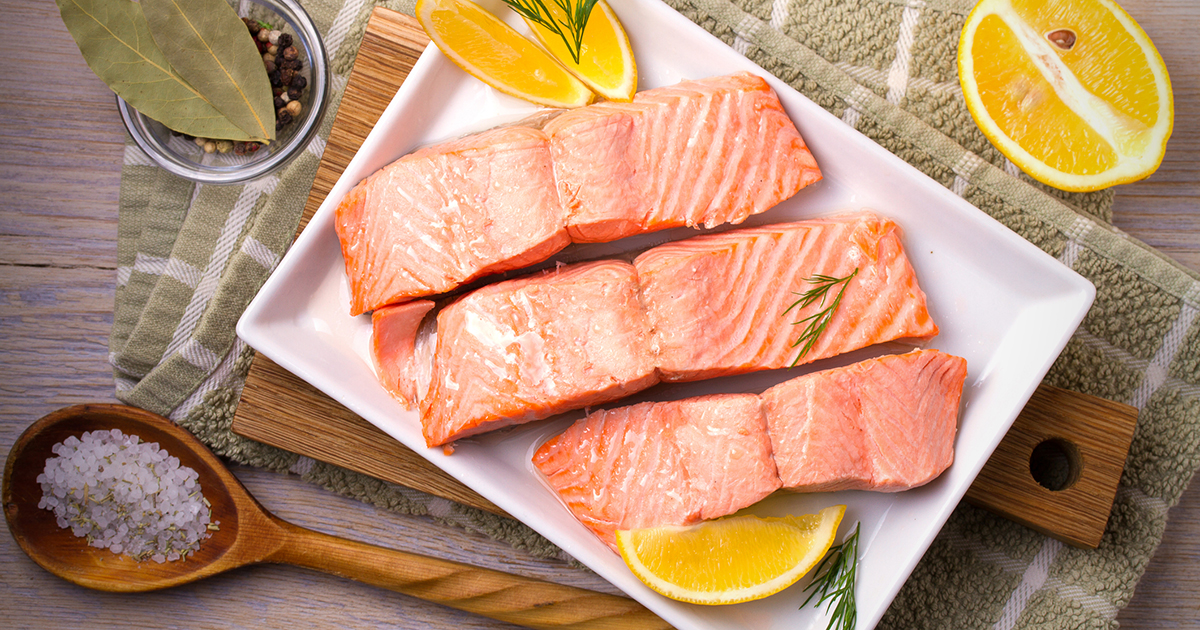
There's no doubt salmon is an incredibly healthy source of fat and protein, as well as many other vitamins and minerals. Where the salmon is sourced, however, will make a significant difference regarding its health benefits and in this case, health risks. Not only do farm-raised salmon contain fifty percent less omega-3 fatty acids, they are also potentially exposed to a wide range of toxic chemicals.
Evidence indicates farm-raised salmon contain higher levels of mercury, PCBs, and dioxins than wild-caught salmon. To make them appear pinker, they're fed petrochemicals, not to mention the chemicals found within their daily diet. The real worry is up to ninety percent of these toxins bioaccumulate in the human body and can be passed onto an unborn child.
Discover the next poisonous food now.
Meat Tainted with Ractopamine

It's no secret that conventionally raised meat is packed with chemicals, not to mention the horrendous conditions some animals are exposed to. You may think you are only eating chemicals relating to their food, but pigs, cattle, and turkeys are all injected with ractopamine, which is a drug originally used to treat asthma. Ractopamine is a muscle relaxer known to reduce the fat content in meat. When you purchase that meat, as much as twenty percent of this drug remains. Unbelievably, since 1998, nearly two thousand individuals have been poisoned after eating pigs that were fed this drug. Within dairy herds, it has been shown to cause disability and death. In terms of human health, this drug attacks the cardiovascular system and can cause chromosomal abnormalities.
Uncover more potentially poisonous foods now.
Macaroni and Cheese

Besides the preservatives added to this heavily processed food, boxed macaroni and cheese contain two dangerous food dyes: Yellow 5 and Yellow 6. Considering this food is often fed to children, the research regarding these additives is incredibly alarming. Although behavioral issues aren't necessarily fatal, they can be extremely detrimental to a child's well-being. These dyes have been linked to quite a few different serious behavioral issues, including hyperactivity and learning disabilities. Since they're petroleum-based, they have also been associated with an increased risk of cancer.
Get more details on what foods could be more harmful than initially thought now.
Fat-Free Snacks

Fat-free snacks are known to promote weight gain, typically due to their high sugar content, but that's not all you need to worry about. Fat-free potato chips, for instance, often contain Olean or Olestra and is stated in the media to be one of the top fifty worst inventions. A wide range of side effects has been reported based on the consumption of Olestra, including significant weight gain, intestinal issues, and worst of all, a depletion of fat-soluble vitamins. If your body cannot absorb vitamins A, D, E, and K, you increase your risk of disease. Though it is currently banned in Canada and the United Kingdom, the United States continues to distribute this additive.
Continue to learn about another potentially poisonous product now.
rBGH Milk And Dairy
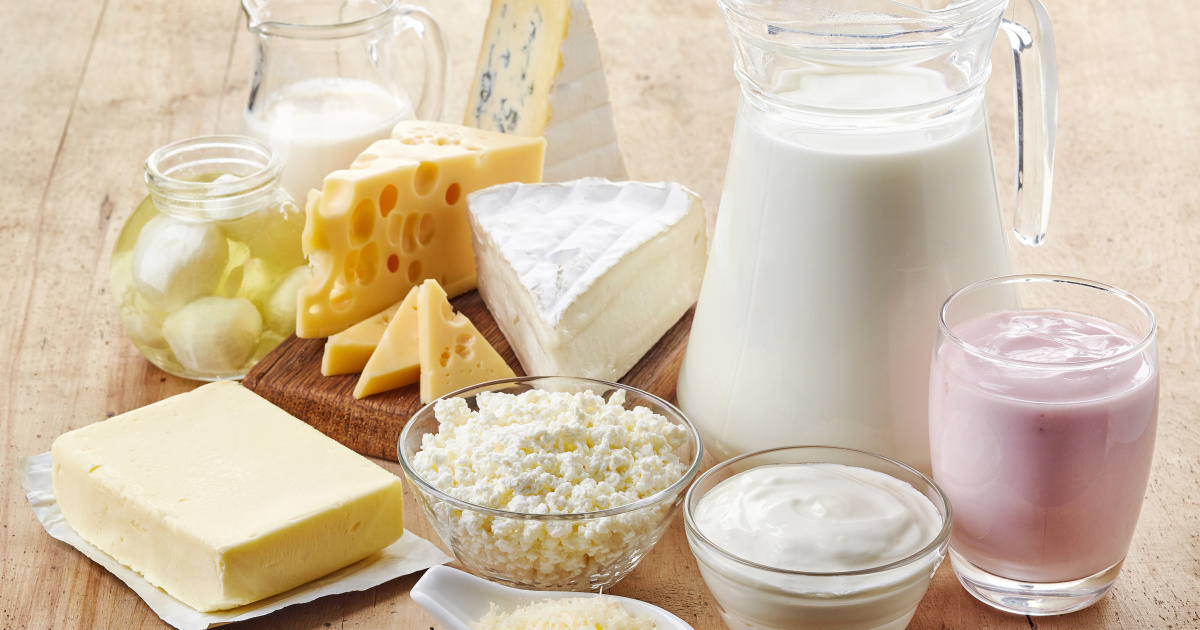
There's no doubt Americans love dairy products, however, to keep up with the demand for dairy, rBGH was developed. This artificial hormone mimics natural bovine somatotropin, which is the hormone that increases the production of milk. Injected into one out of every six cows, this synthetic hormone causes significant adverse effects. Cows have been shown to suffer from sixteen related health conditions, including high rates of mastitis (inflammation of breast tissue). Once consumed by humans, it increases the risk of breast, colorectal, and prostate cancers.
Keep going for more information on unhealthy and even poisonous foods many individuals are consuming now.
Foods Containing MSG

Monosodium glutamate (MSG) is a substance added to numerous popular foods to enhance flavor. Foods that commonly contain MSG include processed meats, canned soups, canned vegetables, coffee, fried and fast foods, Chinese food, potato chips, gravies, salty snacks, ranch dressing, frozen dinners, potatoes, grape juice, tomatoes, and parmesan cheese. It may be difficult to pinpoint whether a product has MSG in it because the substance hides behind approximately twenty-five different aliases. Glutamic acid is an amino acid that occurs naturally and is important to may bodily functions. However, this synthetically altered, highly processed form of it called monosodium glutamate is toxic. MSG results in an excessive excitation of the taste buds that causes the brain to release certain chemicals called neurotransmitters. An excess of any single neurotransmitter can cause an individual's brain cells to become excited to the point of destruction. Neuron death occurs with MSG because an accumulation of glutamate in the brain triggers several inappropriate enzymatic chain reactions. MSG has proven to cause symptoms such as headache, heart palpitations, breathlessness, burning sensations, facial tightness, sweating, chest pains, flushing, muscle weakness, and nausea.
Read more about potentially poisonous food now.
Unpasteurized Dairy Products
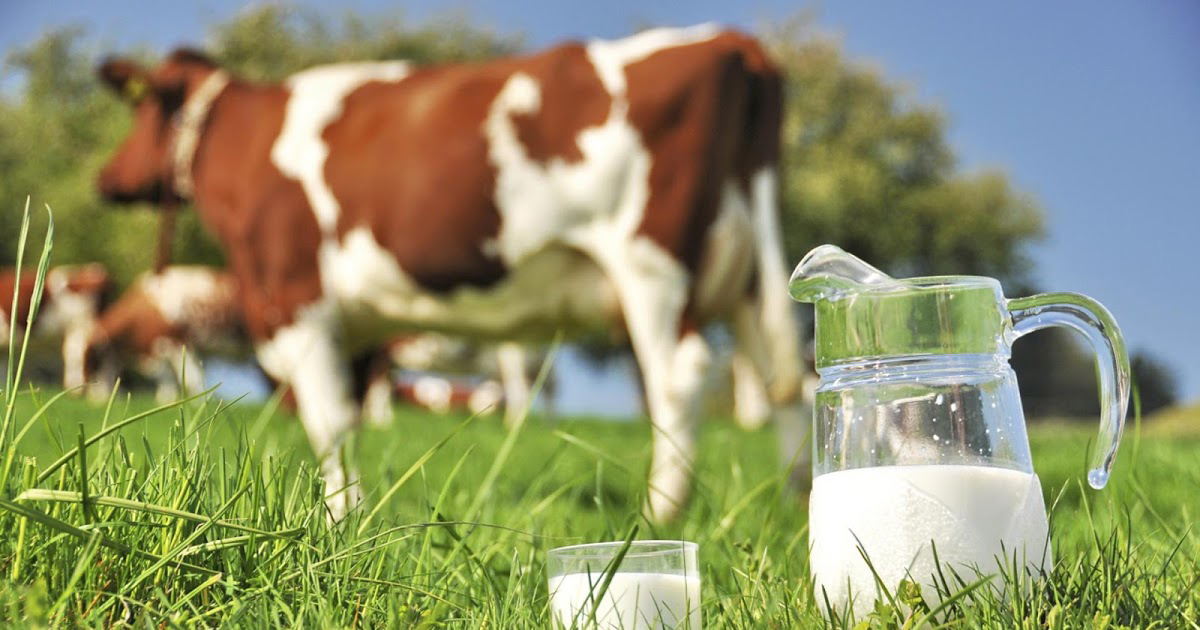
Unpasteurized dairy products are any product containing dairy that has not been through the pasteurization process. Pasteurization is the mechanism used to remove pathogens from food to make it safe to consume. Pasteurization has lead to a decrease in the rate of transmission of dangerous diseases such as tuberculosis, polio, typhoid fever, scarlet fever, and dysentery. However, some individuals continue to consume raw dairy products that have not gone through this process. Pathogens, including E. coli, salmonella, brucella, campylobacter, listeria, and yersinia, are consumed in the form of unpasteurized dairy. The pathogens that contaminate unpasteurized dairy foods can result in unpleasant and sometimes dangerous symptoms, including stomach cramps, headache, diarrhea, fever, cough, night sweats, and vomiting. These symptoms can last for up to a month in healthy individuals and can become severe in those who have weak immune systems. Populations that are especially vulnerable when it comes to foodborne illness in unpasteurized dairy are the elderly, individuals affected by cancer, individuals affected by HIV or AIDS, children, and individuals who have received a donor organ transplant.
Learn more about potentially poisonous foods now.
Unwashed Fruits Or Vegetables

Consuming unwashed fruits or vegetables is an unhealthy and unsafe practice for anyone who consumes fresh produce. Fresh produce was the source of the most extensive foodborne illness outbreak of the United States within the last century. That outbreak occurred in the year 2011 due to listeria contamination. Many individuals feel their fresh produce does not need to be washed with water before using it cook or eating it. The reason is most likely related to the general perception that water does not sanitize anything by itself. Some individuals will neglect to wash their produce when they plan to cut or peel the skin off and discard it. This can cause illness because the knife cutting through the skin of the fruit or the fingers peeling it can spread pathogens from the produce skin to the inside of the fruit or vegetable.
Most individuals who neglect to wash their fresh produce habitually before cooking or consuming it do not think of several factors. The fields and orchards where the produce is grown are often watered from a local well source that has no type of regulation or testing standards. Contaminated water is transferred into the soil and onto the fresh produce during farming. Additionally, produce farmers are known to utilize one of the best known affordable fertilizers called manure. Manure is feces, and feces are a quick way to spread pathogens from one organism to another. Insects and parasites that feed on produce can leave behind contaminated material on the fruit as well. Simple but thorough washing of the fresh produce with water can help prevent these foodborne illnesses.
Get familiar with the next harmful food many consume now.
Undercooked Meat

The consumption of undercooked meat increases an individual's risk of contracting a foodborne illness three-fold. All forms and types of meat apply to this risk, but pork, beef, and chicken are the main sources of E. coli, salmonella, and listeria outbreaks in the united states. Pork, beef, and lamb chops, steaks, or roasts are undercooked when the meat has not reached an internal temperature of 145 degrees Fahrenheit. Ground forms of beef and pork are not fully cooked until the meat has reached an internal temperature of 160 degrees Fahrenheit, while ground forms of poultry are not fully cooked until they reach 165 degrees Fahrenheit. Ensuring the meat becomes this hot will help kill off many pathogens known to contaminate raw meats. Salmonella can contaminate raw red meat and poultry, which can produce symptoms of fever, abdominal cramping, and diarrhea when consumed. Listeria can contaminate raw seafood, undercooked poultry, and undercooked red meat that causes symptoms of muscle aches, fever, diarrhea, nausea, and may induce a miscarriage in pregnant women. Other parasites called trichinosis and toxoplasmosis can contaminate raw pork, lamb, and venison. These parasites cause an infection that produces flu-like symptoms in individuals who consume them.
Discover another harmful food now.
Pits Of Fruits
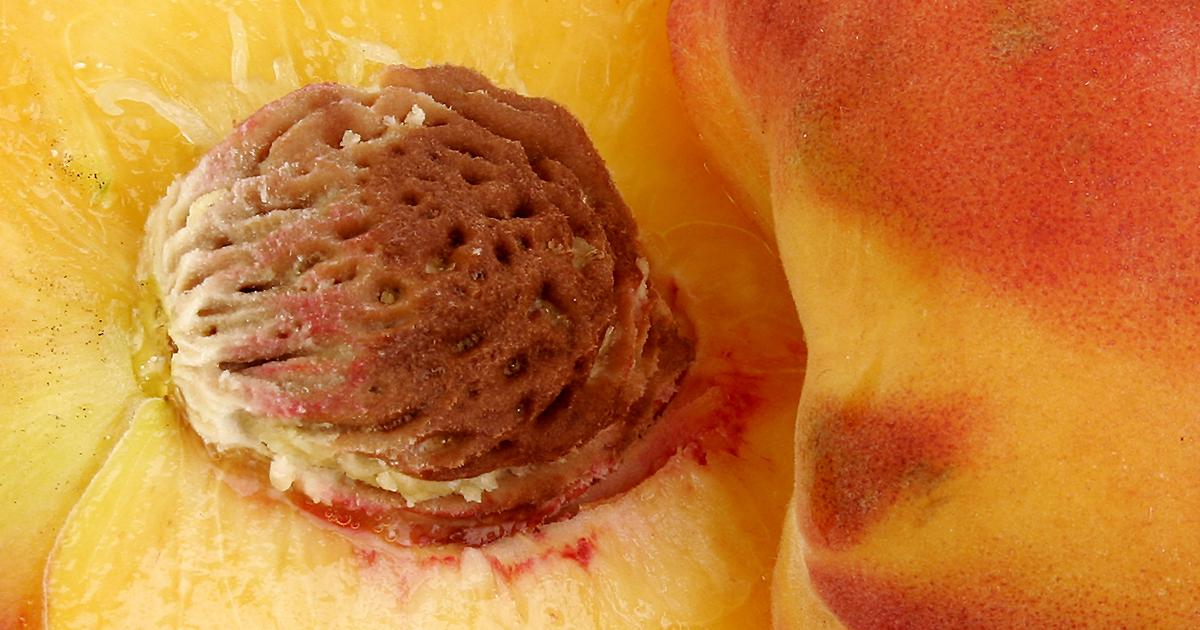
Some individuals may consume the pits of fruits when they juice or grind fruits, thinking it is just more nutrients added into their snack or meal. However, the pits of fruits can be toxic in the body due to the substances produced upon their digestion. The pits and seeds of cherries, apricots, apples, peaches, and crabapples have an organic compound in them called amygdalin, which converts into sugar and hydrogen cyanide when it is digested and metabolized. Cyanide is a poison that inhibits the blood from being able to transport oxygen around the body, resulting in tissue and organ death. The consumption of 1.5 milligrams of amygdalin per every two pounds of body weight has the potential to be fatal in a human. Apricots contain around 14.5 milligrams of amygdalin for a gram of seeds, while red cherries contain four milligrams of amygdalin per gram of seeds. Black cherries contain 2.75 milligrams of amygdalin per gram of seeds, while peaches and plums both contain a little over two milligrams of amygdalin per gram of seeds. Although compounds like amygdalin occur naturally in many plants, it does not mean they are always safe to eat. It is important to note that high vitamin C levels in the body can increase sensitivity to the cyanide compounds produced during metabolization of fruit pits and seeds.